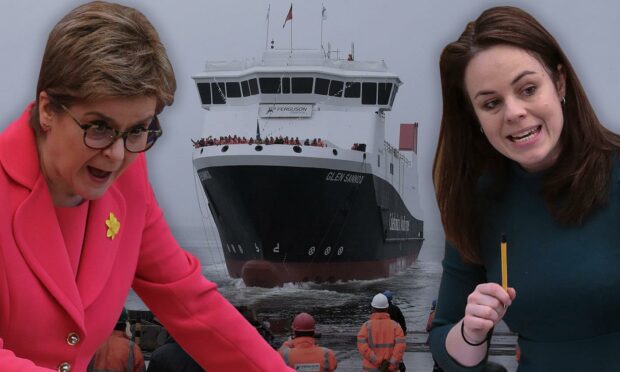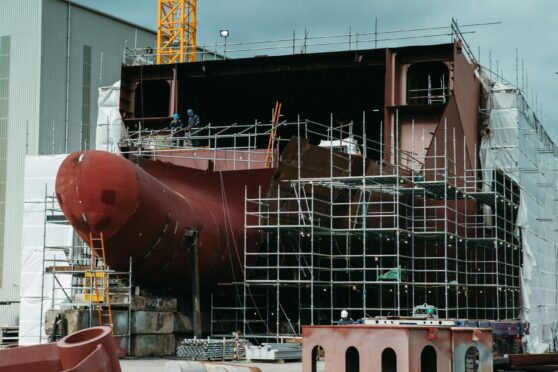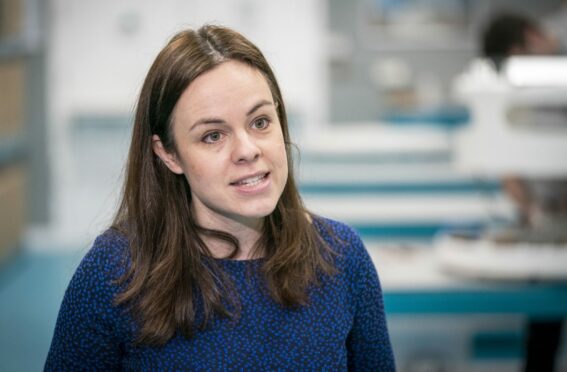The failure to deliver two new ferries for Scotland’s islands “exposes a multitude of failings” which leave islanders without promised lifeline links, according to a damning new report.
Public spending body Audit Scotland probed why construction of two new ferries is running four years late and is almost two and a half times over budget.
The report estimates the cost of the vessels will hit £240 million, although former Scottish Government shipbuilding adviser Luke van Beek suggests the costs could be as high as £400m.
The report states the project lacked decision-making and oversight.
And it says there is “no clear understanding” of what has been achieved with “significant sums” of public money.
It warns major problems at Ferguson Marine shipyard in Port Glasgow remain unresolved, weakening the resilience of Scotland’s ferry network.
Opposition parties say the government and First Minister Nicola Sturgeon should be held to account over the “embarrassing fiasco”.
‘Significant’ work still needs done
The Scottish Government awarded the contract to build two new vessels, Hull 801 and Hull 802, to Ferguson Marine in October 2015.
The two ships were due to be completed in May 2018 and July 2018 respectively.
However problems were first reported to Transport Scotland only two months later and the shipyard ended up going into administration in August 2019.
It was brought into public ownership by the government in December the same year.
Audit Scotland’s report highlights failures right from the very beginning.
It describes how ministers approved the contract despite concerns being raised by Caledonian Maritime Assets Limited (CMAL), the company which owns Scotland’s ferries, ports, harbours and ferry infrastructure.
Milestones set out in the initial contract were “unrealistic”, dates were missed and delays got worse.
A two-year long dispute further complicated the project between CMAL and the shipyard over vessel design and costs.
Shortly before the shipyard went into administration in August 2019, both vessels were still years away from being completed and were already showing signs of deterioration.
Equipment had been damaged, and no more than six people were working on Hull 801 and no more than two people on Hull 802 at any one time.
The report says the government did not have a full understanding of the scale of the challenges at the shipyard when it decided to nationalise Ferguson Marine.
Delays expose ‘multitude of failings’
Audit Scotland called for a detailed plan for the completion of the two vessels.
Government agency Transport Scotland will also need to review what went wrong by the end of the year.
Stephen Boyle, auditor general for Scotland, said: “The failure to deliver these two ferries, on time and on budget, exposes a multitude of failings.
“A lack of transparent decision-making, a lack of project oversight, and no clear understanding of what significant sums of public money have been achieved.
“And crucially, communities still don’t have the lifeline ferries they were promised years ago.”
Finance secretary defends government
Finance Secretary Kate Forbes defended the decision to nationalise Ferguson Marine, saying it saved the project to build the two new ships and protected over 300 jobs.
Ms Forbes admitted there were a number of “well-known” challenges but remains confident the two new ships will be completed as soon as possible.
She said: “The decision taken to safeguard the future of Ferguson Marine was the right one.”
Ms Forbes made her expectations “absolutely clear” to the management board at the shipyard, and says any suggestions the procurement process was not followed properly are “wrong”.
She added: “We are entering a new era of shipbuilding on the Clyde.
“Significant progress is being made and Ferguson Marine is back to being a serious contender for future vessel contracts.”
‘Absolutely damning’
Scottish Conservative transport spokesman Graham Simpson said: “This report is absolutely damning of the SNP’s overwhelming failures on Scotland’s ferry network.
“Ministers have presided over an embarrassing fiasco year after year and it is our island communities who have been left abandoned.”
Neil Bibby MSP, Scottish Labour’s transport spokesman, criticised the government’s “relentless incompetence”.
He added: “While ministers have come and gone, the first minister has been a constant presence throughout this fiasco.”
Willie Rennie MSP, Scottish Lib Dem economy spokesman, said island communities are being “left all at sea” by the SNP’s failures.
He said: “This report places the blame for seven years of ferry failures squarely in the hands of SNP ministers.”




